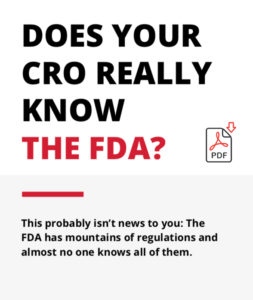New Breakthroughs Create New Cancer Research Endpoints
In December 2018 the FDA released new guidelines for clinical trials of cancer drugs and biologics. Such endpoints serve different purposes at different points in time during the trial. During early trials the focus is on efficacy and safety. Later on, trials select endpoints for clinical benefits like improved survival and symptom relief.

For cancer patients, the survival rate is considered the optimum endpoint all other things being equal. Tumor assessment and symptom assessment are two other common endpoint categories.
Advances in the biological sciences, however, are creating new and effective endpoints for clinical cancer research. For example, minimal residual disease has been used as a surrogate endpoint to obtain accelerated approval for acute lymphoblastic leukemia treatments. Likewise, metastasis-free survival obtained traditional approval for a non-metastatic castration-resistant prostate cancer treatment.
Missing data is one of the biggest complications for any study. This is especially true when using innovative endpoints. The protocol must specify all methodology used for analyzing incomplete data. Similar results between primary and secondary sensitivities can help to strengthen studies with missing data.
It’s best to meet with the FDA prior to submitting marketing application protocols. Meetings will include multidisciplinary teams chosen by the FDA. After these meetings sponsors can present protocols and receive feedback on both endpoints and protocol designs.
Our next blog entry will specifically discuss in detail the non-metastatic castration-resistant prostate cancer treatment approved in the traditional fashion but by extraordinary means.
Next Steps:
Read our analysis on other FDA Guidelines.
Schedule a one-on-one call to see how we can help with you FDA Submissions.
See how Princeton’s services can help you.
Subscribe to our blog to stay up to date.